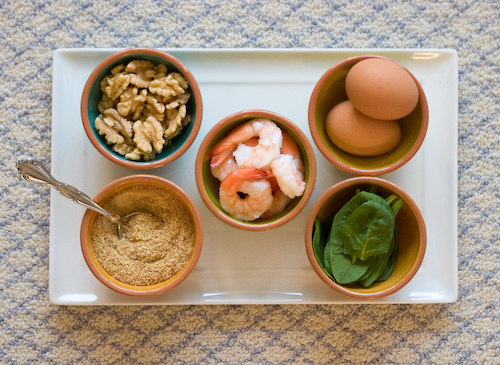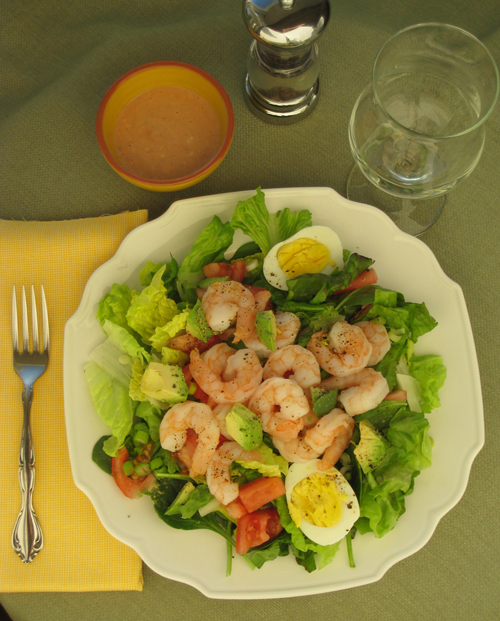French Kids Eat Everything

A Thought Worth Sharing
A deepening reverence for the Creation of our world is an unexpected benefit of Word of Wisdom Living. Have you experienced this? Sandwiched between the creations of the earth and the first parents, Adam and Eve, the book of Genesis describes the creation of our food supply.
After each Creation stage there is the benediction, “and God saw that it was good.” So a reverence for the Creation leads us to deeper respect for our food supply—as it was first created—and vice versa. This deep thought leads us to the French, who love vegetables, and a book of interest.
Rules of the French Food Culture
In the last post we noted the new book, French Kids Eat Everything by Karen Le Billon. For adults as well as children, there are profound differences between the food cultures of France and America. France is an old nation with petrified traditions; we’re a new nation where innovation is celebrated and anything goes. Which can be a problem.
We eat—snack, actually—wherever we are, walking, standing, or in the car. This horrifies the French who, with few exceptions, dine at tables and disdain snacks. We’re in a hurry so eat fast; we invented fast food. The French may indulge in fast food on occasion, but they relish the two hours spent dining each day. We see the act of eating as simply ‘fueling up.” The French don’t eat-and-run, they dine, and for them it’s a love story—one of life’s pleasures. We can learn from the French—and vice versa.
Perhaps our French readers will comment on this. Better yet, says the beautiful wife, we should take a trip to France and see for ourselves. I knew that was coming. In the meantime, Word of Wisdom Living advocates a food culture based on the best of both cultures. Here are the ten rules (with my comments):
- Parents: You are in charge of food education! A century ago Food Inc displaced moms as the judge of what to eat. Fortunately, the French thought otherwise—they kept mom in charge.
- Avoid emotional eating. No food rewards, bribes, etc.
- Parents plan and schedule meals and menus. This “planning” is the subject of two Healthy Changes.
- Eat family meals together. A future Healthy Change—the family dinner.
- Eat your veggies; think variety. This is a big issue; several Healthy Changes address the veggies.
- You don’t have to like it, but you do have to taste it. A great rule which brings to mind a conversation seen on Facebook: Determined dad to son: “You will sit at the table until your dinner is finished. If you don’t finish it tonight, you can just sleep there and eat it for breakfast. And, it won’t be nearly as good cold.” Equally determined son: “It looks like I’m going to die right here in this chair, Dad.”
- No snacking!! It’s OK to feel hungry between meals. A French proverb says hunger is the best seasoning. It’s true—food tastes great when we’re hungry but what vegetable could please children who've snacked on sweets all day.
- Slow food is happy food, as in—eat slow! I think she meant “slowly,” but you get the idea. Last night we measured our dining time (30 minutes for dinner; the French average an hour). The beautiful wife remembered the frustration of the busy years when the house was full of kids and she would cook for an hour to make dinner and it would disappear in 15 minutes. Wish I could do that one over.
- Eat mostly real food. Treats are for special occasions. Amen.
- Remember: Eating is joyful—relax! Joyful dining—a great idea for a future post.
I didn’t share these rules so you wouldn’t have to buy the book but so you would consider the book for your library. Go to Amazon.com to read part of the book online and see if you like it. (I'll admit the author's a little whiny.)
Odds and Ends
Biggest Loser: The beautiful wife loves The Biggest Loser; she’s inspired by how a healthy body transforms the lives of the contestants. We're all like that. One focus of the program is the nonstop amount of exercise. So there was a crazy moment on the last episode when they promoted a prize—a new car—by noting all the ways the car could do work we normally do, like opening and closing doors, etc. Wrong idea. I recommend my standard-shift, 1988 Ford Bronco as a healthy car. Lots of character too.
Exercise: Which leads to a recent study about Alzheimer’s disease and the benefits of exercise. Basically, the group who exercised least in the study had a 200% higher risk of AD. Exercise could be anything that takes effort, including cooking and washing dishes but I like outdoor exercise also.
Cindy's Prize: Two weeks ago we offered a prize—Pollan’s book, In Defense of Food—for the person with the best Healthy Change scorecard. You’ll recall that we had finished the first quarter so you could earn up to five points for complying with each of the 13 Healthy Changes. The possible score was 65 points and the winner, Cindy Baldwin, had 59 points. Cindy also writes the blog Being Cindy. Check her blog; she’s an impressive woman. Ms. Baldwin, if you’ll email us your address, we'll send the prize. (Email: Skip (at) wordofwisdomliving (dot) com.)
Smiling all day: Finally, if you want exercise inspiration and have a little nostalgia for Rita Hayworth, check this collage of movie dance scenes, set to the Bee Gees’ Staying Alive. You'll be dancing through the house.
 Thursday, April 19, 2012 at 10:23AM | by
Thursday, April 19, 2012 at 10:23AM | by  Skip Hellewell |
Skip Hellewell |  15 Comments | | in
15 Comments | | in  book of the week,
book of the week,  kids |
kids |  Email Article
Email Article 












